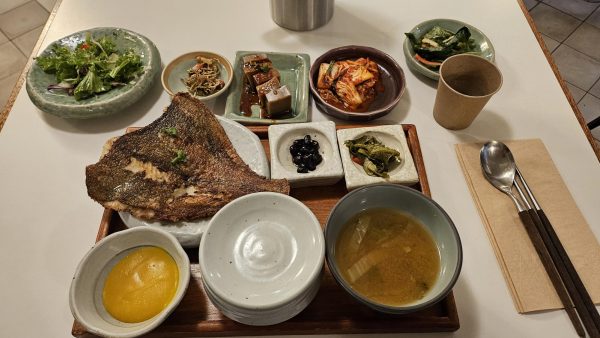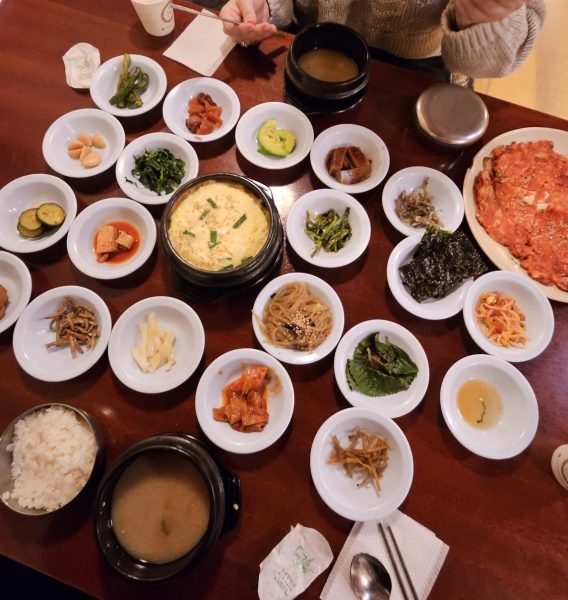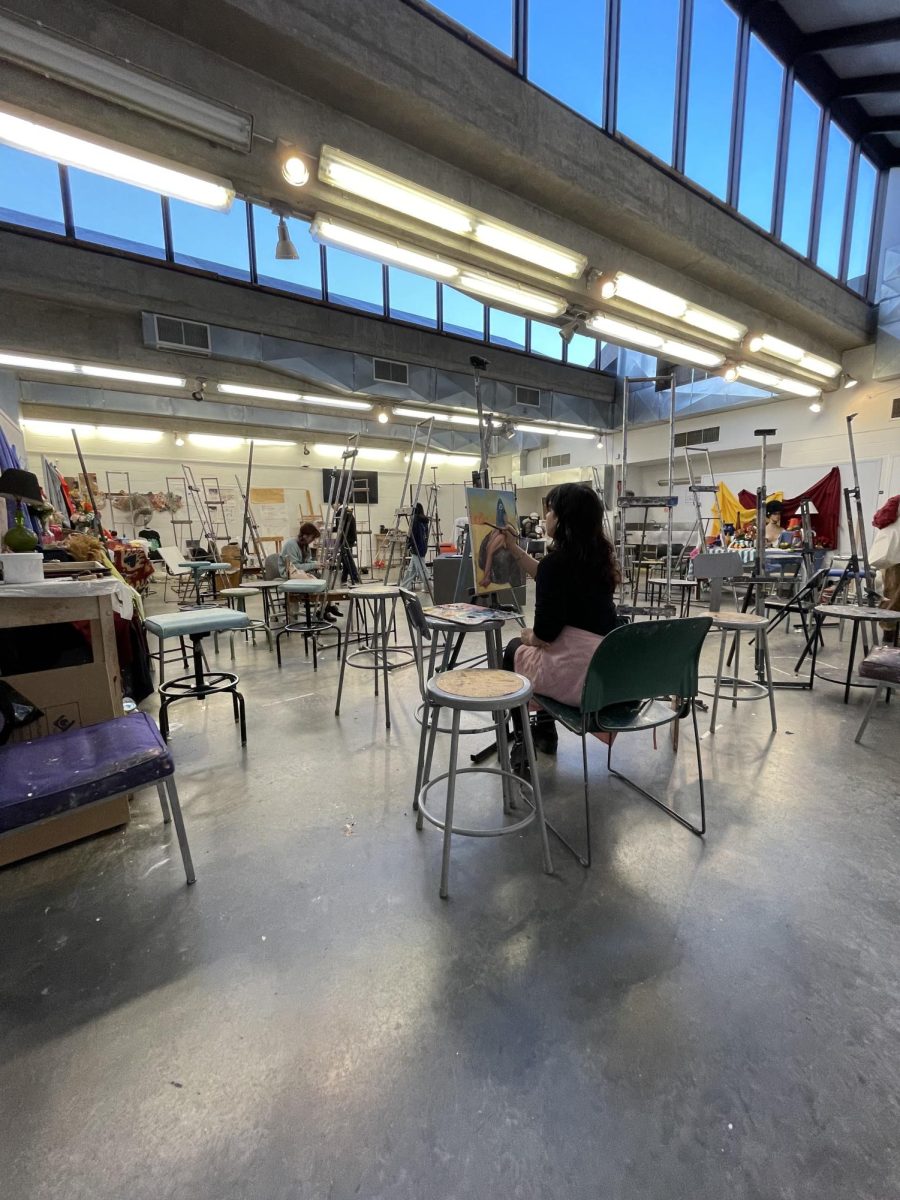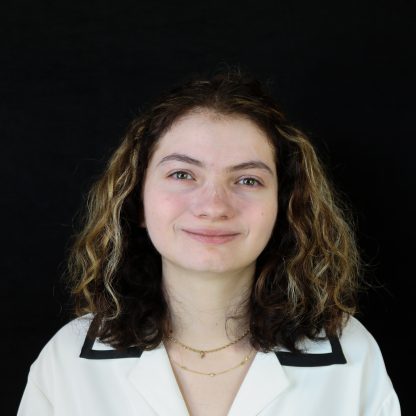
This new feature in The Statesman will be written by our writers currently in Stony Brook University’s study abroad programs. It will feature their experiences and tips for studying and traveling abroad.
If you ask someone what their favorite Korean dish is, it is highly probable that they will mention Korean Barbecue. This is not a coincidence, as Seoul, South Korea is a meat lover’s sanctuary. Travelers with dietary restrictions may have a rude awakening when trying to find food that adheres to their diets. Hunting for vegan eateries is nearly impossible, as vegetarian and pescatarian restaurants are already tricky to come across. To make your travel planning easier, here are some noteworthy pescatarian Seoul restaurants, some of which also have vegetarian dishes.
Starting off with what could possibly be one of the cheapest omakase restaurants, It Sushi is located on the outskirts of the hip neighborhood Hongdae. Say goodbye to $300-per-person omakase and say hello to an approximately $13-per-person meal. This eight-seat restaurant features three 10- to 12-piece omakase signature dishes, along with a wide selection of side dishes and individual rolls if you’re hungry for more.
Don’t expect anything fancy since this is a simple, casual eatery. The fish is fresh, with basic cuts such as salmon, tuna and shrimp. While most of the rolls are already above-average sushi, the standout rolls definitely enhance the experience. Our simple dinner doubled as a show when the chef busted out a cooking torch and toasted these standout rolls in front of us. Our chef wisely advised us to eat these rolls without soy sauce since its concentrated metallic taste would have drowned out the nuanced flavors of the torched fish.
This intimate, cozy restaurant serves up one of the most delectable and comforting knife-cut noodles, or kal-guksu (갈국수), in all of Western Seoul. This restaurant specializes in knife-cut noodles and ongsimi (옹심이), a potato dough soup. Ongsimi can be described as Korea’s chewier version of Italy’s gnocchi.
To get the best of both worlds, order the ongsimi kal-guksu. This dish features broth that has been simmering for hours. This creates a rich and flavorful base that complements the noodles and ongsimi, which both have the signature chew of homemade pasta dough. The ongsimi adds a potato flavor and a slightly peppery kick to the dish. Eating ongsimi kal-guksu will not only satisfy your hunger with its generous portion, but warm your soul.
These dishes do not include meat or fish.
3. Grandmother’s Recipe (할머니의 레시피)
Even if you didn’t grow up in a Korean household, dining at Grandmother’s Recipe in Seongsu-dong gives you a homestyle dining experience demonstrative of the immense love woven into Korean cooking. Many of the menu items offer a nostalgic taste of Korean home-cooked meals, complete with several fermented side dishes.
The grilled fish carries a delicate yet savory flavor, with hints of smokiness. The texture is unbelievably tender and succulent, offering a satisfying bite with each forkful. This dish came with a pumpkin dipping pureé that added a refreshing touch of sweetness and creaminess. While the grilled fish is arguably the best on the menu, Grandmother’s Recipe also offers a vegetarian option: a mixed rice dish with mushrooms and leeks.
The star of the show has to be the ginseng soup. Ginseng is often used in Korean cooking for its medicinal properties and earthy flavor. The soup is rich and aromatic, infusing the dining experience with warmth and comfort, reminiscent of a homemade broth prepared with care and love.


Nestled in the lavish shopping district of Hannam, Sigol bapsang is a homey, affordable restaurant. The restaurant is divided in half, with two tables on top of a heated platform. Rather than traditional seating arrangements with chairs, guests must remove their shoes before stepping onto the platform and settling onto the comfortable floor cushions for a relaxing dining experience.
There is only one dish on the menu, but there are optional add-on items such as stir-fried octopus and kimchi pancakes. The main dish is a tofu ginseng soup. The tofu, with its soft texture and ability to absorb flavors, complements the earthy notes of ginseng in the soup, creating a dish that is both hearty and comforting.
The real stars of this restaurant are the complementary side dishes. Ranging from simple laver seaweed to nuanced fermented cucumber and glass noodles called japchae (잡채), the 20 available side dishes enhance the dining experience and showcase the depth of Korean flavors and culinary techniques.
Some Korean dishes that often have meat-free variations include seaweed rice rolls or kimbap (김밥), rice bowl or bibimbap (비빔밥), clay pot rice or sot-bap (솥밥) and stew or jjigae (찌개) — specifically soft tofu stew or soondubu jjigae (순두부 찌개).
If you decide to check out any of these places, always check with the waiter or restaurant staff to ensure there is no meat included. What may seem meat-free could contain meat since Koreans tend to add protein whenever possible!




















